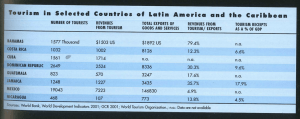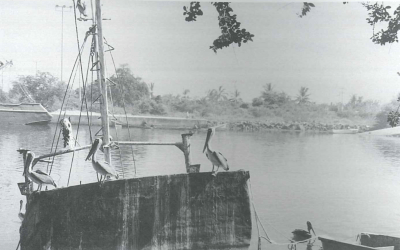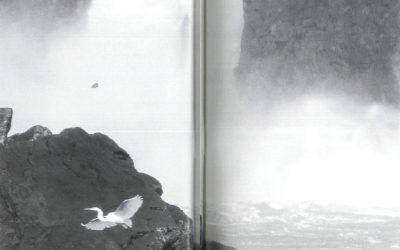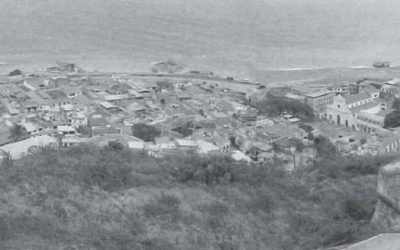After September 11
 The September 11th terrorist attacks brought a more immediate sense of crisis to an industry already experiencing a need for restructuring. With the sudden stoppage of flights and the general retreat of air travel, tourism arrivals into the region fell dramatically, with very strong effects in countries that were already suffering from other economic problems: Dominican Republic, Costa Rica and other Central American countries with significant industrial sectors linked to the U.S. economy were already under stress due to sudden drops in orders from abroad and massive job cuts. Several countries in Central America were also suffering from the double shocks in due to the collapse in coffee prices and the sequel of a two-year drought that was causing severe unemployment and even famine in the countryside.
The September 11th terrorist attacks brought a more immediate sense of crisis to an industry already experiencing a need for restructuring. With the sudden stoppage of flights and the general retreat of air travel, tourism arrivals into the region fell dramatically, with very strong effects in countries that were already suffering from other economic problems: Dominican Republic, Costa Rica and other Central American countries with significant industrial sectors linked to the U.S. economy were already under stress due to sudden drops in orders from abroad and massive job cuts. Several countries in Central America were also suffering from the double shocks in due to the collapse in coffee prices and the sequel of a two-year drought that was causing severe unemployment and even famine in the countryside.
Tourism has been a growing industry in Latin America in the last decades. By the end of the nineties this was a sector with sales over $35 billion in Latin America and the Caribbean and more than 50 million passengers per day arrivals. Tourism receipts in the Caribbean region range from about 30% of total exports receipts in the Dominican Republic, to more than 75% in Barbados and St. Lucia. In many of these countries, this sector is the largest employer.
However, not all has been well with this sector in the region. The share of tourism trips to the region in world tourism has been falling, as other destinations have grown faster and more popular. At the beginning of the decade a consensus was emerging that some restructuring was needed, with a greater emphasis on marketing and catering to the needs of well-defined target groups of tourists.
The economic recession in the U.S., that started early in the year was already hitting this sector, even though their initial effects were not as noticeable due to seasonal patterns in Caribbean Tourism. Recent studies show a very significant sensitivity of tourism to income and economic activity and this was beginning to show up in tourism arrivals by mid-year 2001.
Since early September there has been some modest recovery in tourism travel to the region, attracted, among other things, by aggressive price discounts. However, arrivals and bookings are still well below normal levels.
One positive outcome of this crisis has been a renewed effort from the different countries and private organizations to work together, finding ways to address some of the structural issues that were affecting their sectors before the crisis, and this might help an orderly restructuring. This is one of the cases in which some degree of cooperation and dialogue in times of crisis might help avert major problems. For instance, there is little doubt that price cuts were necessary to bring back tourists scared to fly abroad. However, different studies show that the price sensitivity of overall tourism is not so high (i.e., the increase in total tourism travel due to discounts is not large); however, there is a very large sensitivity to prices when choosing among different destinations. Under these circumstances, lack of some minimal coordination could easily degenerate into price-wars that will benefit the consumers in the short-term, but will deepen the crisis of the tourism sector to the region, postponing structural changes that point to making these countries more attentive to tourists requirements.
Table 1. Tourism in selected countries of Latin America and the Caribbean 1999
| Number of tourists | Revenues From Tourists | Total Export of Goods and Services | Revenues From Tourism Exports | Tourism receipts as % of GDP | |
| Bahamas | 1577 Thousand | $1503 US | $1892 US | 79.4% | – |
| Costa Rica | 1032 | 1002 | 8126 | 12.3% | 6.6% |
| Cuba | 1561 | 1714 | na | na | – |
| Dominican Republic | 2649 | 2524 | 8336 | 30.35 | 9.6% |
| Guatemala | 823 | 570 | 3247 | 17.6% | – |
| Jamaica | 1248 | 1227 | 3435 | 35.7% | 17.9% |
| Mexico | 19043 | 7223 | 146830 | 4.9% | – |
| Nicaragua | 468 | 107 | 773 | 13.8% | 4.5% |
Sources: World Bank, World Development Indicators 2001; GCR 2001; World Tourism Organization.
Related Articles
Let’s Go
Acapulco was covered in water. After days of constant downpour, the gushing, bubbling water had overrun the inadequate sewer system. In its merciless drive towards the ocean, the flood …
Brazil
Did you know that Brazil has awe-inspiring sites, such as the Iguazu Falls, the Itaimbezinho, and the Amazon rainforest, as well as 2,000 miles of virtually uninterrupted soft white beaches? …
Restoring a Ravaged Venezuelan Coastline
Dramatic floods ravaged the Caracas seaside known as the Littoral in December 1999, ripping up houses and literally re-shaping the coastline and beaches. Less than a year later, I joined several …




